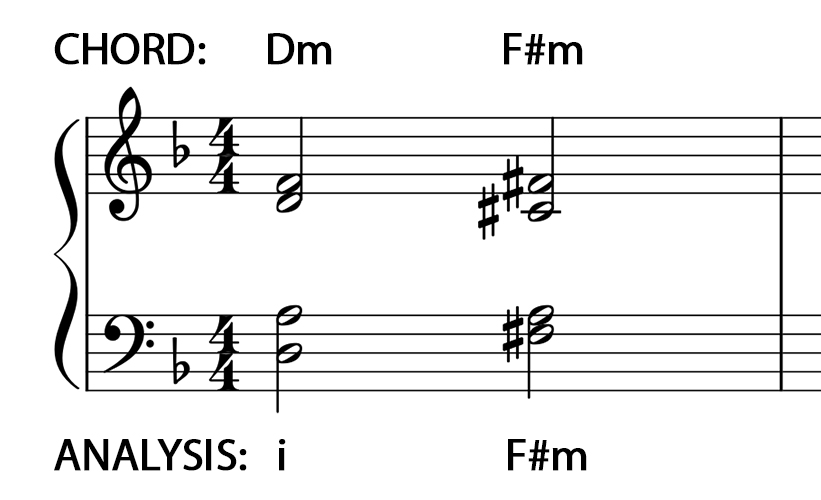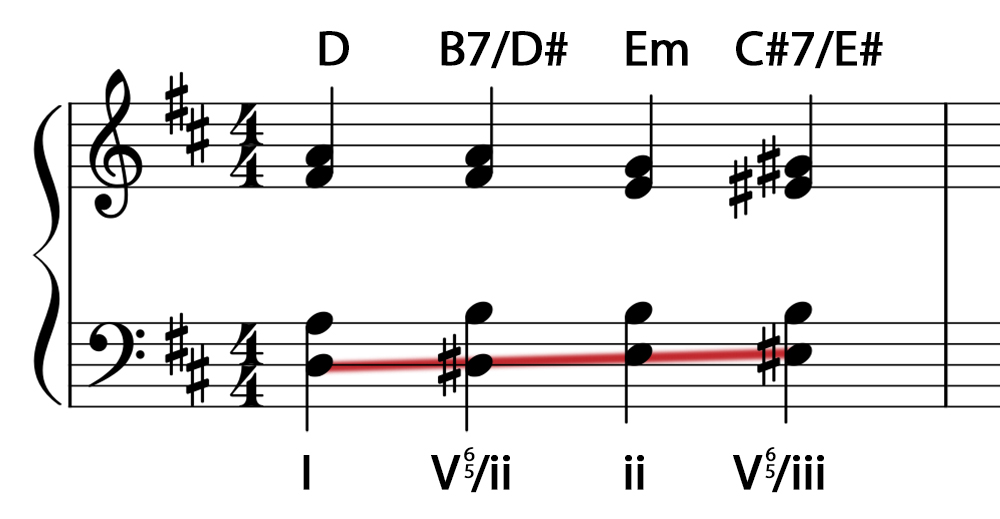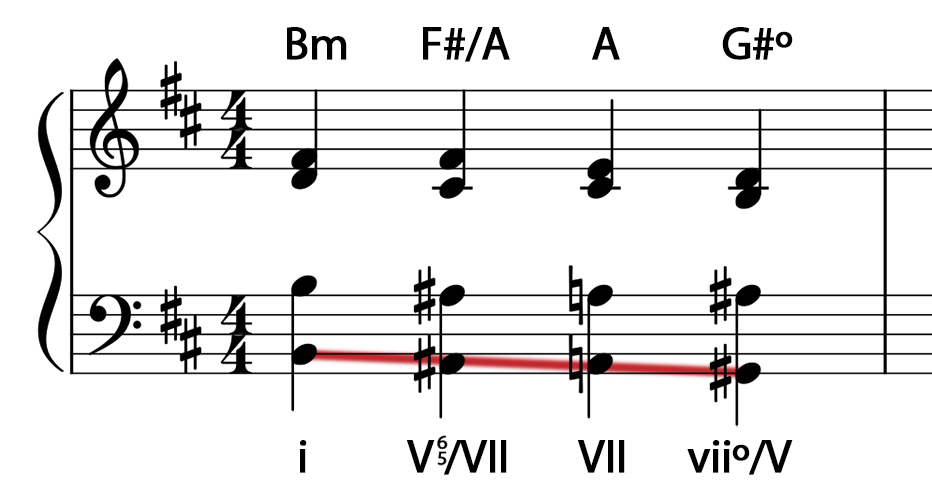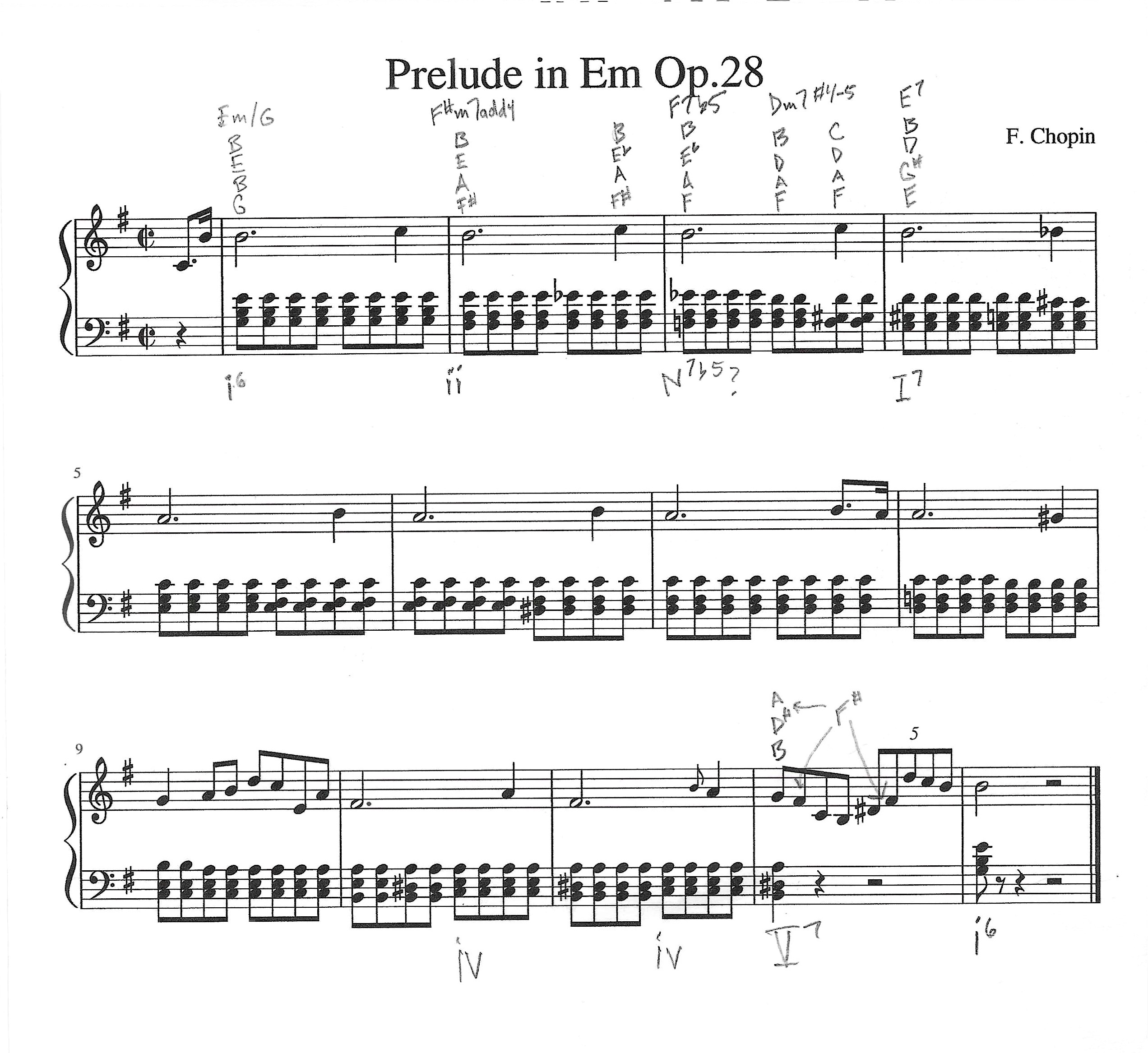COLORISTIC CHORD SUCCESSIONS
-These make use of chords that are foreign to the key in non traditional ways.
-One way to do this is through unexpected root movements to chords that are foreign to the key you’re in.
-A lot of times these progressions involve CHROMATIC MEDIANT relationships. Two triads are said to have this relationship when their roots are a major or minor 3rd apart and one root is foreign to the key.
-Even more distantly related would be the DOUBLY CHROMATIC MEDIANT relationships. Two triads are said to have this relationship when one is major and the other is minor (or vice versa), the roots are a 3rd apart AND they share no common tones.
-In analysis, we would simply name the root of the chord and the sonority below.
-In this example, we are in the key of Dm. The first chord is Dm, or the i chord. The second chord is an F# minor chord.
-Because F is the 3rd of D minor, an F# is still considered to be of a MEDIANT relationship.
-Because it is rooted in F# (foreign to D minor) it is considered to be of a CHROMATIC MEDIANT relationship to the preceding chord, D minor.
-Unfortunately, in our analysis, all we can call this is an F#m chord.





